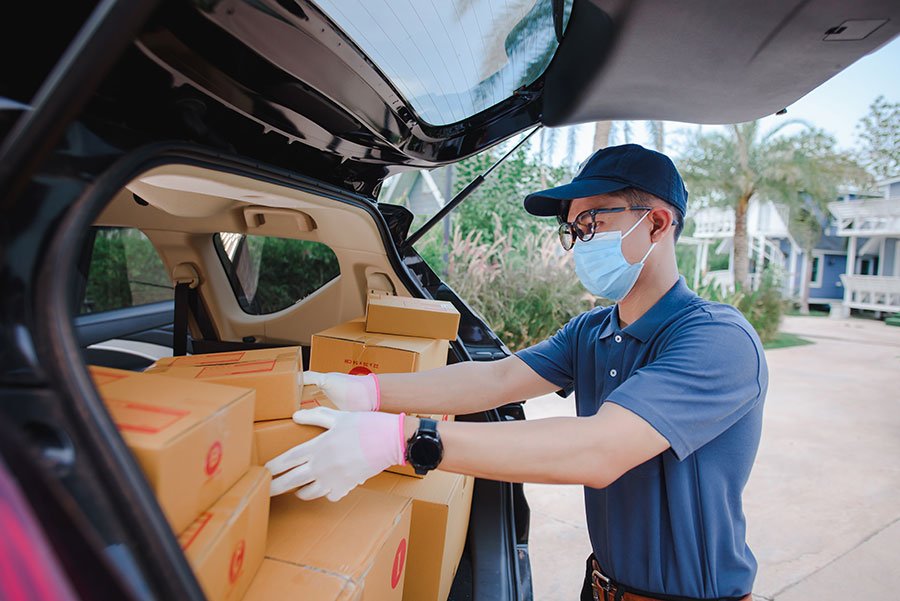Published May 26, 2020
Prior to COVID-19, fulfillment operations were already plagued by an ongoing labor shortage, rising costs and surging e-commerce sales. Additionally, store closures have continued to reach record levels in the U.S., with more than 15,000 retail stores at risk of permanently closing in 2020-a nearly 60% increase over last year.
While the government is slowly beginning to lift limitations like the stay-at-home orders and allowing more businesses to begin reopening, there are still many hurdles to overcome before we can move on to what will become the new-or next-“normal.” Here’s what retailers need to know as they prepare to restart operations and enter the busy holiday season.
Shifting shopping and spending habits
Despite the government easing restrictions, many consumers are still wary of large crowds and meandering through malls and will still opt to shop online whenever possible. A recent survey found that 65% of women and 54% of men will not feel safe using dressing rooms because of COVID-19. The same survey found a similar number of men and women-66% and 54%, respectively-will not feel comfortable working with sales associates in retail stores.
With more than half of shoppers avoiding dressing rooms and unable-or unwilling-to interact with products in-person, we can expect to see a rise in returns this year. Prior to the pandemic, between 15-30% of online purchases were returned, with apparel items falling on the high end of that estimate. These numbers will undoubtedly rise as more consumers shift to online shopping. Despite unemployment reaching the highest rates since the Great Depression, as well as an overall decline in total retail sales, U.S. e-commerce sales rose 49% in April, according to Adobe’s Digital Economy Index (DEI).
Since many events and travel plans have been canceled or postponed for the foreseeable future, consumers may be looking to spend more on gifts this holiday season. This was witnessed over Mother’s Day, where florists across the country reported spikes in sales this year, confirming the National Retail Federation’s predictions that total spending for the holiday honoring moms would reach nearly $2 billion more last year despite the recent pandemic.
A facelift for fulfillment operations
As e-commerce orders continue to grow, many retailers are exploring ship-from-store models. Transforming brick-and-mortar locations into micro-fulfillment centers enables retailers to reduce delivery times and costs and ultimately improve the customer experience. Utilizing automation can also help increase speed and capacity while limiting human interaction.
In addition to in-store fulfillment methods, pickup and delivery options that minimize contact are also gaining popularity as consumers continue to keep their distance amid the COVID-19 pandemic. Adobe’s DEI reported that buy online pick up in store (BOPIS) orders this April increased 208% over the previous year. And these added conveniences are here to stay-a survey by CommerceHub found that 59% of consumers are more likely to use curbside pickup once the pandemic subsides.
While these fulfillment methods may be the answer for both consumers and retailers, proper implementation is required to ensure business success and customer satisfaction. Many retailers that rushed implementation in response to COVID-19 experienced a myriad of operational issues including-but not limited to-inefficient picking processes, unorganized staging areas and chaotic pickup practices. When considering new fulfillment strategies, retailers must ask themselves the following questions:
- How can we process a 50-100% increase in online orders (and returns) over the 2020 holiday season?
- How can we add capacity and control costs to protect profits?
- How can we convert existing space into a contactless pickup experience for customers prior to the holiday season?
- Which stores can be converted into regional fulfillment centers to support online, BOPIS and retail replenishment needs over the holidays?
- What other purpose(s) could these retail outlets serve to the local area (such as high-volume order fulfillment, restocking for regional distribution centers, etc.)?
- What methods or solutions can be used in our distribution centers to support the converted stores and reduce overall transportation costs?
- What basic changes can be made over the summer or early fall to better prepare for the peak season?
To learn more about how to optimize your fulfillment operations and deliver on consumer demands this holiday season and beyond, visit our newsroom or contact us at info@tompkinsinc.com.



